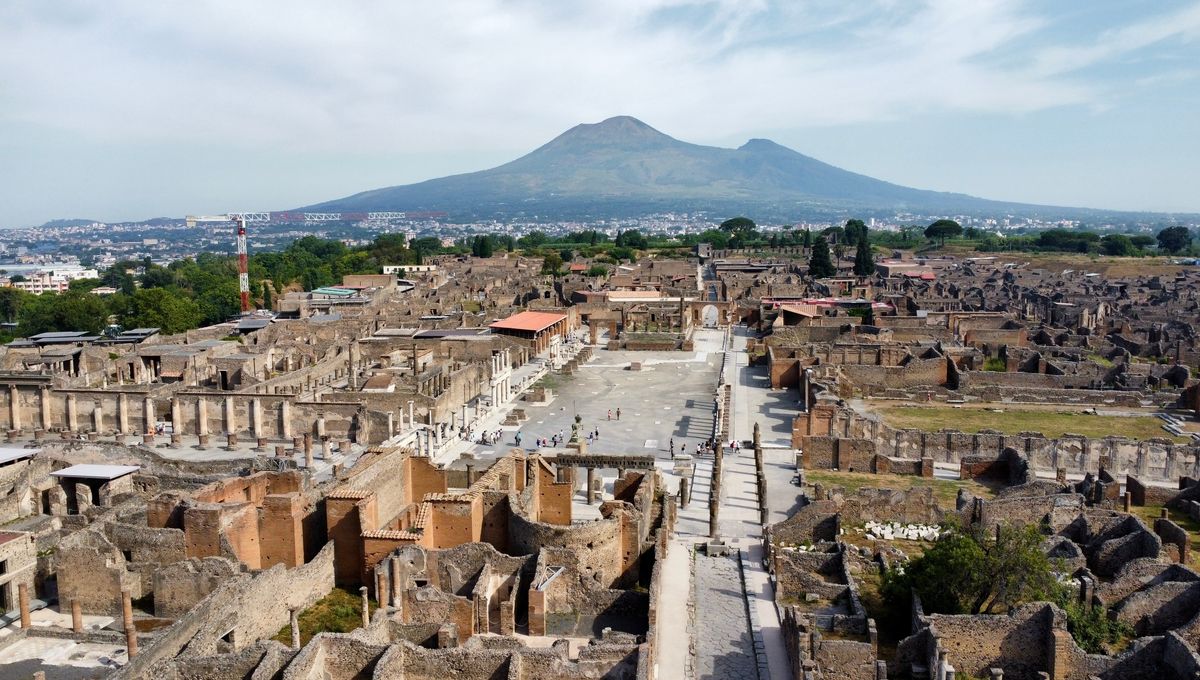
When Mount Vesuvius erupted in 79 CE, the scolding lava, ash, and gas that poured from its entrails converted the Roman city of Pompeii into a terrifying snapshot of death and destruction. Two millennia on, researchers have finally recreated a blow-by-blow account of the disaster, revealing exactly how the eruption progressed and dragged the city’s residents into the afterlife over the course of a day and a half.
ADVERTISEMENT GO AD FREE
Previous attempts at reconstructing the catastrophe have taken their cue from the writings of Pliny the Younger, who watched from across the Bay of Naples as his uncle – the celebrated naturalist Pliny the Elder – met his miserable end in the shadow of Vesuvius. According to the description penned by the junior author, the eruption began with the emergence of a towering, umbrella-shaped plume at hora fere septima – or around lunchtime – on the 24th day of either October or August.
Cataclysmic events like this are now known as Plinian eruptions, and are associated with enormous ash columns that extend several kilometers into the air and radiate outwards, causing volcanic debris to rain down over vast areas. By examining the various layers of ash, rock, and sediment that blanketed Pompeii, the authors of two new studies have managed to piece together the fluctuating nature of the eruption, creating a precise timeline of the event.
For instance, by observing the types of material in each layer, the researchers determined that the eruption probably began at midday with a phreatomagmatic explosion, which occurs when magma erupts through water. It wasn’t until an hour later that the Plinian column first appeared, causing a type of volcanic glass called pumice to batter and smother Pompeii, eventually accumulating into a 143-centimeter (56-inch) thick layer of sediment.
The Plinian phase of the eruption was also characterized by deadly pyroclastic density currents, which are flowing surges of red-hot gas and debris that spread rapidly across the landscape surrounding a volcano, obliterating everything in their path. Throughout that first evening and into the following morning, eleven pyroclastic flows occurred, at intervals of roughly 80 minutes.
It was also during this period – around 1 am, in fact – that the volcanic plume reached its maximum height of 34 kilometers (21 miles), extending all the way up to the stratosphere. Overall, during the Plinian phase, Vesuvius dumped a whopping 6.4 cubic kilometers (1.5 cubic miles) of volcanic material on Pompeii, Herculaneum, and the surrounding countryside, including massive blocks of rock several meters thick.
Yet the worst was still to come.
ADVERTISEMENT GO AD FREE
At 6.07 am on October (or August) 25, the Plinian column collapsed in an infernal fountain that sent further pyroclastic flows rippling through the countryside around Vesuvius. The most severe of these began an hour later and spread out over an area of 25 square kilometers (9.65 square miles), ripping through the streets of Pompeii and killing everyone who hadn’t managed to escape the city yet.
Around half of the bodies preserved at the ancient site were found within the volcanic layer generated by this pyroclastic flow. In total, 17 separate pyroclastic density currents were detected by the researchers over a period of 32 hours.
“The eruption came to an end at 8.05pm, leaving behind a trail of devastation that continues to evoke deep concern as unfolding events continue to reveal the extent of the aftermath,” write the study authors.
Indeed, with Vesuvius still active and the city of Naples located within reach of a pyroclastic flow, the possibility of history repeating itself is one that has to be taken very seriously.
ADVERTISEMENT GO AD FREE
The two studies have been published in the Journal of the Geological Society.
Source Link: The Volcanic Eruption That Annihilated Pompeii Was 32 Hours Of Pure Hell